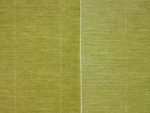dgerharter
Member
We run a variety of heavier (80# and up) paper and paperboard, and we have recently had some print quality complaints that our pressmen want to attribute (at least in part) to bad paper.
Does anyone have practical information regarding the standard variation in paperboard thickness? I can certainly understand a tolerance for what can be called "12 point", but how much variation within a roll or lot should be expected? We sheet our own stock and thus have the opportunity to measure the thickness at several points across the web and during the sheeting run.
Before I take this any further, I would like to know what this fine group thinks. How much variation is too much? What are the likely signs of overly inconsistent paper thicknesses?
Thanks for sharing your wealth of knowledge!
dgerharter
Does anyone have practical information regarding the standard variation in paperboard thickness? I can certainly understand a tolerance for what can be called "12 point", but how much variation within a roll or lot should be expected? We sheet our own stock and thus have the opportunity to measure the thickness at several points across the web and during the sheeting run.
Before I take this any further, I would like to know what this fine group thinks. How much variation is too much? What are the likely signs of overly inconsistent paper thicknesses?
Thanks for sharing your wealth of knowledge!
dgerharter














